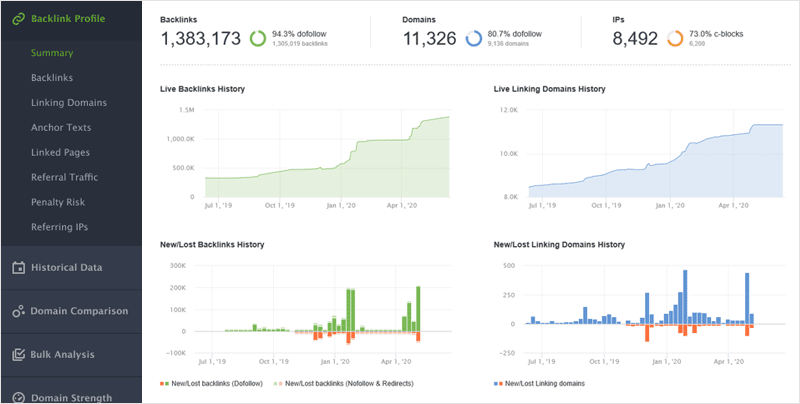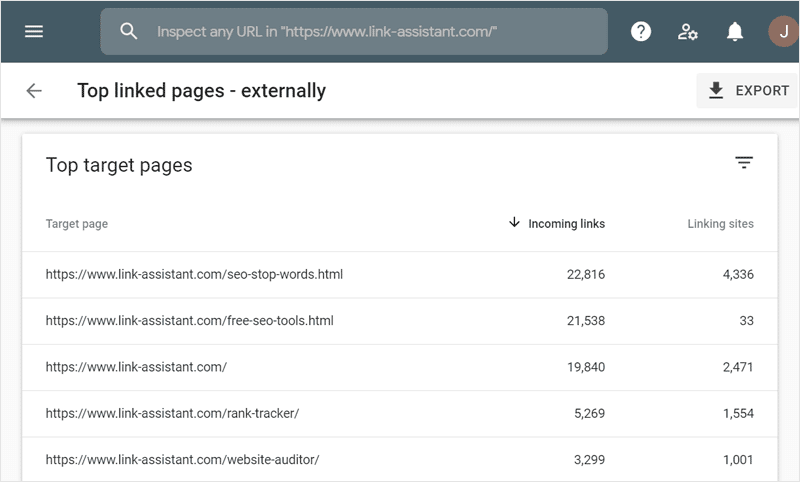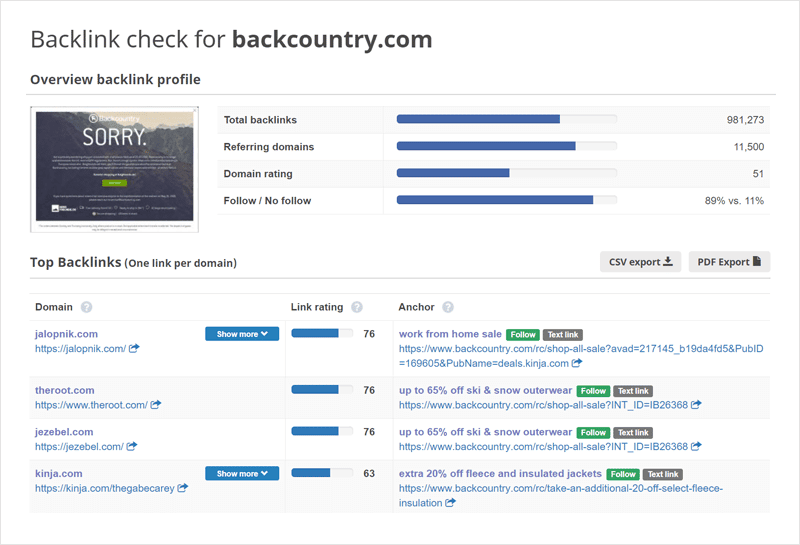Website and page authority, as defined by the number and quality of backlinks, is one of the most important search ranking factors. It is also one of the search engine optimization areas where you can gain the most advantage over your competitors. Sure, there are also technical and on-page SEO, keyword research, and content optimization, but there is only so much you can improve in these areas. With link building — the sky’s the limit.
This is why it is crucial that you are equipped with the best backlink tools. The best backlink checker will enable you to spot new link-building opportunities, discover the strategies of your competitors, and monitor the health of your backlink profile. In this post, we will focus on some of the best backlink checkers on the market, with one added condition — they have to be available for free, either completely or at least partially.
1. SEO SpyGlass
One of those backlink analysis tools that can truly do it all.

SEO SpyGlass provides you with a fully specced-out dashboard for backlink analysis and management. Unlike other free checkers, SpyGlass allows you to sort and filter the discovered backlink data using any of the several dozen backlink parameters:
- Linking and linked pages;
- Anchor text and anchor URL;
- Dofollow and nofollow attributes;
- Domain and page authority of the link source;
- Penalty risk, i.e. how spammy the link source is;
- And more.
The number of backlinks you can view for free is limited to 1,100 per domain, but the number of domains you can check is unlimited, so you can research your own websites as well as your competitor websites. And if you want some additional data, there is an option to connect SEO SpyGlass to Google Search Console and Google Analytics. Once connected, you will be able to pull your backlink information from Google tools, pour it into SEO SpyGlass, and process the data using the SEO SpyGlass dashboard — free of charge.
And when it comes to discovering new backlink opportunities, SEO SpyGlass is equipped with a feature called Domain Comparison. Add a few of your competitors and find the websites where their backlinks intersect. These websites are your immediate leads. Since these websites are linking to two or more of your competitors, it means that they do not have a particularly exclusive partnership and will probably agree to link to you website as well.
Best for: with advanced analytics and the largest data allowance on this list, SEO SpyGlass is best used as your home base for backlink research and management.
Free data allowance: up to 1,100 backlinks per domain, unlimited domain checks, unlimited backlink analytics.
2. Google Search Console
A completely free backlink tool with a large data allowance, but limited opportunities for backlink analysis.

Search Console is a Google tool meant to help webmasters improve their websites. It is completely free, but can only be used to analyze the websites that you own. Once you get your ownership verified, you will be granted access to a variety of site quality dashboards, one of which is the list of backlinks drawn directly from Google’s index. However long the list, you can only view the top 1,000 results. No additional metrics and no analytics features are provided on-site, but you are free to export the data and analyze it using other tools.
A peculiar thing about Search Console is that its backlink lists are usually much shorter than the ones from other backlink checkers. It’s because Search Console removes low-quality backlinks from the list and only counts the ones that matter. This type of vetting means you can’t use the tool to catch spammy backlinks and remove them from your profile. But, on the bright side, it also means you receive a set of backlinks very different from other tools.
Best for: Google Search Console is best used as a source of raw backlink data, which can then be exported to SEO SpyGlass for analysis and additional insights.
Free data allowance: up to 1,000 backlinks, but you can only check the sites that you own.
3. Seobility
A perfect tool for a quick review of your or your competitors’ backlink profiles.

Seobility allows up to three backlink checks per day and limits the number of backlinks you can view to 400 per check. The list of backlinks is sorted from the highest link rating to the lowest, so, even though the number of links you can view is limited, you do get to see the best ones.
The links are accompanied by a few additional parameters, like anchor texts, dofollow/nofollow attributes, link types, and linked pages. At the top of the page, you also get a quick summary of the overall backlink profile: total backlink count, domain rating, and the number of referring domains.
Best for: Seobility can be used in two ways. One is to check your own website and perhaps find some of the links missed by Search Console and SEO SpyGlass. Two is to run a quick check of your competitor’s backlinks and gain an insight into their strategy.
Free data allowance: 400 backlinks per check, three checks per day.
4. Ahrefs
A popular link checker tool that draws data from one of the largest backlink indexes.

Ahrefs backlink checker allows an unlimited number of checks per day, but the number of backlinks you can view is limited to the top 100. Backlinks come with some additional metrics, like domain and page authority, traffic, and anchor text and type. There is also a quick review of the overall backlink profile: domain rating, the total number of backlinks, and the total number of referring domains.
Best for: use this checker interchangeably with Seobility for a quick exploration of your own or your competitor’s websites. Use Ahrefs first because it doesn’t have a daily limit. If it looks like there might be something interesting beyond the first 100 backlinks, switch over to Seobility to retrieve another couple hundred backlinks available over there.
Free data allowance: 100 backlinks per check, unlimited checks per day.
5. SEMrush
The best tool for generating high-level backlink reports and domain summaries.

Most of the tools on this list try to attract users by allowing them to see partial backlink tables and then asking for a payment to check out the rest. SEMrush has gone in a completely different direction. It shares a ton of backlink analytics, but no backlink lists. So you are free to explore the high-level stuff, but, if you want to drill down, you’d have to buy a subscription.
This is perfectly fine because high-level analytics is about the only thing missing from most of the other free backlink checkers. And SEMrush has got plenty to go around. They offer over a dozen of tables and graphs summarizing your backlink profile: backlinks by industry, by country, by top-level domain, attribute, type, anchor, and authority score, as well as backlink history going back over five years.
Best for: SEMrush is a great tool for generating quick, attractive-looking reports and taking the bird’s-eye view of your or your competitors’ link-building effort.
Free data allowance: unlimited reports, but only 5-10 actual backlinks per domain.
Final thoughts
One of the trade-offs of using free SEO tools is that you might have to sacrifice some of the convenience. In the case of backlink checkers, it could mean using a combination of different tools in order to satisfy all of your backlink research needs.
Of the link checker tools discussed in this article, the majority of your needs will be satisfied with a combination of SEO SpyGlass and Google Search Console. The analytics in SEO SpyGlass can be used to compensate for the lack of metrics in Search Console, while Search Console data can be used to combat the backlink limit in SEO SpyGlass. Together, these two make a solid home base for monitoring and managing your own backlink profile and some spying on your competitors.
Other than that, the free versions of Seobility and Ahrefs can be used for quick but limited backlink extraction, while the free version of SEMrush can supply much-needed analytics and reporting. Together, these three make a perfect combo for spying on your competitors and uncovering their backlink strategies.
The post Top 5 free backlink checkers you should be using appeared first on Search Engine Land.
Source: IAB


